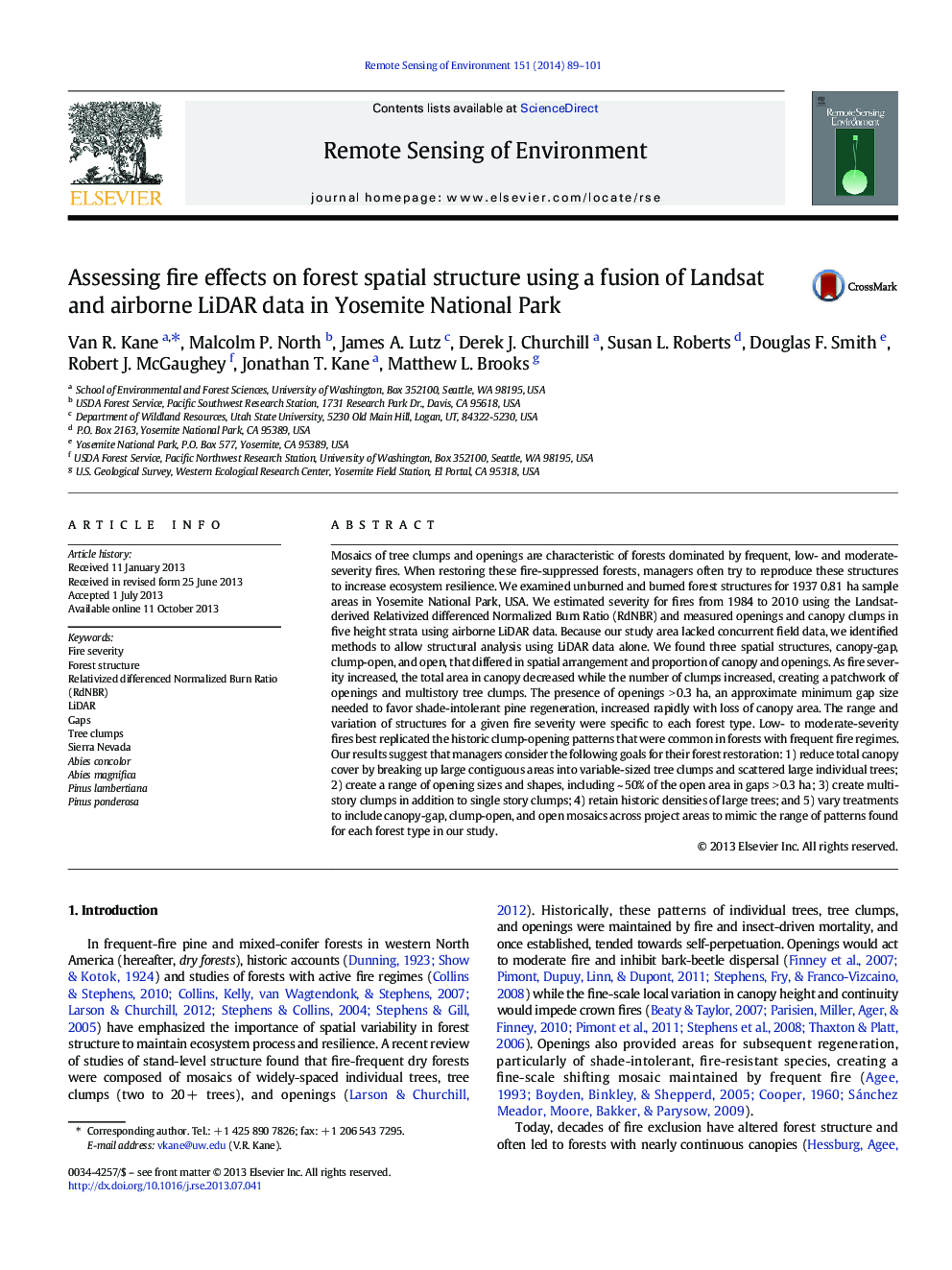| کد مقاله | کد نشریه | سال انتشار | مقاله انگلیسی | نسخه تمام متن |
|---|---|---|---|---|
| 4458875 | 1621249 | 2014 | 13 صفحه PDF | دانلود رایگان |

• Analyzed forest structure & fire severity using Landsat and LiDAR data at Yosemite
• Fire was a dominant process creating structural differences across burn severities.
• Fire resulted in loss of canopy in all height strata and retained multistory clumps.
• Forest types had individual structural trajectories with increasing fire severity.
• Low/moderate-severity fires best replicate historic forest structures.
Mosaics of tree clumps and openings are characteristic of forests dominated by frequent, low- and moderate-severity fires. When restoring these fire-suppressed forests, managers often try to reproduce these structures to increase ecosystem resilience. We examined unburned and burned forest structures for 1937 0.81 ha sample areas in Yosemite National Park, USA. We estimated severity for fires from 1984 to 2010 using the Landsat-derived Relativized differenced Normalized Burn Ratio (RdNBR) and measured openings and canopy clumps in five height strata using airborne LiDAR data. Because our study area lacked concurrent field data, we identified methods to allow structural analysis using LiDAR data alone. We found three spatial structures, canopy-gap, clump-open, and open, that differed in spatial arrangement and proportion of canopy and openings. As fire severity increased, the total area in canopy decreased while the number of clumps increased, creating a patchwork of openings and multistory tree clumps. The presence of openings > 0.3 ha, an approximate minimum gap size needed to favor shade-intolerant pine regeneration, increased rapidly with loss of canopy area. The range and variation of structures for a given fire severity were specific to each forest type. Low- to moderate-severity fires best replicated the historic clump-opening patterns that were common in forests with frequent fire regimes. Our results suggest that managers consider the following goals for their forest restoration: 1) reduce total canopy cover by breaking up large contiguous areas into variable-sized tree clumps and scattered large individual trees; 2) create a range of opening sizes and shapes, including ~ 50% of the open area in gaps > 0.3 ha; 3) create multistory clumps in addition to single story clumps; 4) retain historic densities of large trees; and 5) vary treatments to include canopy-gap, clump-open, and open mosaics across project areas to mimic the range of patterns found for each forest type in our study.
Journal: Remote Sensing of Environment - Volume 151, August 2014, Pages 89–101